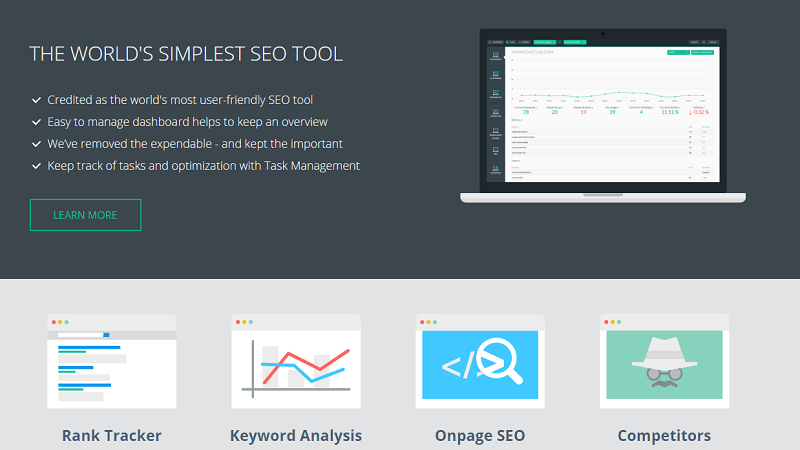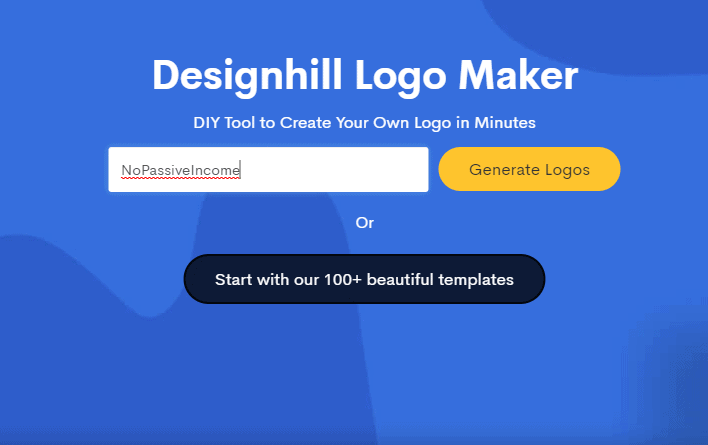If you are a digital nomad (or aspire to become one), you will surely have looked at all the possibilities the web offers to work independently, wherever you are.
Blogging, affiliate marketing, freelance services are all valid ways to generate revenue, based on your skills.
But another interesting way to make money with the internet is creating and selling online courses.
The post will help you on this venture.
Table of Contents
1. The Idea

This is really a crucial step. To make sure your idea is winning, pay attention to the following points.
- There is already a market (and an audience) that is interested in the topic you want to cover. To be original, you do not need to talk about unique arguments, it’s enough to be authentic in the way you do it, choosing your own style and form.
- There is a strong niche. You can check it out by creating a survey of some ideas for your online course and see which one is the most appreciated.
- Talk about something you’re already familiar with. The ideal thing is that you already have a reputation as an expert or leader in your industry and that your ideal customers want to learn something from you. If you are a neophyte, you better want to start out with an info product, like an eBook, for example.
- You are passionate about the subject you want to teach: this is crucial. No Passion, No Party!
2. Trace the Content
Once the topic has been chosen, it is time to think about the content to include and how to structure them.
This is also a critical phase, because even if you think about it as well, you want to really help those who are participating, making them appreciate the quality of what you offer, achieving great results once they’ve completed your online program.
Here’s what you have to keep in mind at this stage:
- Who is your ideal participant? For whom do you plan the course? Choose a well-defined and not too wide niche.
- What does your ideal participant need to learn to achieve his goals? Remember that the course is built to help the user.
- What are the concrete goals of your online course? It’s about the real results you think you can guarantee to those attending your course when it’s over.
- What is the desired user experience? How do you want to interact with them? Remember that your style can make a difference: if you talk about business the same way of the others, you will probably struggle to be successful. Choose a clear mood, with emotions and values that represent you and a model that suits you and your character. Video, audio, group calls, Facebook group: choose the way that best suits you.
- How long should the course be? It’s not a race for those who “do it longer”! Optimizing is the key, finding a balance between content to be given and needs to be met.
To better achieve this step, just imagine your course participants as travelers, who want to reach their destination in the least number of stages and with the best possible experience. Each stage represents a major topic, which will then should be divided into well-developed and designed sub-categories . This way, you can create a real map, from the beginning of the course to the end.
There are 3 fun ways you can literally extract ideas from your head:
- Have a nice brainstorming with a big blackboard. Write a few topics and move them back and forth to decide which sequence to deal with the content you want to include in your course. Visualizing this step really helps.
- Use mental maps. This is very gratifying for those who like to see concepts take form as files in your mind.
- Write text in words or pages. Simpler, but more rigorous. Very practical.
3. Create the Content
This is the stage where you need to start creating and organizing PDF files, spreadsheets, video lessons, and so on.
This process is very demanding, because creating all the material is very important and requires a lot of energy and concentration. Be prepared to avoid procrastination and slowdowns!
My advice is not to worry about being perfect in every small part of the realization. Your goal is to create a quality product, but at the same time the most important thing is lessons should be easy to follow and implement to achieve a real result.
To begin with, simply try to build clear, effective, and useful content. This post may really help to boost productivity.
4. Price and Placement
It’s time to think about how you want to place this online course, which means better looking at the profile of your ideal participant and in what market segment – low, medium or high – you want to position yourself.
Although many say that is not the case, often the price is linked to the length of the course. For example, a 4-week course costs less than a 4-month course. However, this is true only in some cases.
If you are able to help users to achieve in less time what others can do in more, it does not matter if your course time is short. You have to consider the value of what you offer and your customer’s needs.
Needless to say that another factor to consider is your degree of experience and reputation. If you are a newbie, it’s likely that if your price is too high, no one or few will buy your course. If you have been working for many years in your field, offering your expertise, thus deciding to create your first online course, you can serenely place yourself in a high price range.
Still, the definition of the price is always a work in progress and must be tested in order to find the right balance.
5. Your Target + Sale Time

Last but not least in order of importance, it’s your goal.
Once you’ve set the sale price of your course, I strongly suggest you decide what revenue you want to achieve and how many people you wish to enroll in this course. Let’s say you want to make $5,000 and that the sale price of the course is $100, then you have to aim to have 50 subscribers.
Based on these numbers, you can study a valid action plan, with a marketing strategy. Social media, for example, is a powerful weapon. Promote your course all over your social accounts, maybe adding gamification principles to make the thing most interesting for the users. For social proof and added credibility, consider being the expert yourself with tons of online MBA, MHL, and other available programs offered nowadays. Also, you can send personalized invites to your contacts.
And now, it’s time to sell it!
There are several platforms to help you in selling your online course. I recommend:
Let me know in the comments below if you are planning on creating an online course and if you’ve already dropped a few ideas.
What do you think of the points mentioned in this post?
Please share your opinion and don’t forget to post on social media, if you liked it.




















Hi Erik:
I am big fan of Udemy. I am a developer and enroll in courses time to time, since I have keep myself updated.
I noticed that the guy who created one of these courses, made more than $300K from just a few courses(my rough calculation based on number of participants). And this course was a popular one.
So it is true that you can sure make a good income creating online courses, if you have the passion.. And of course, hard work too.
Regards
Tom
Hey Tom and Erik..
If I may add to this conversation.
I really disagree on Udemy being a great opportunity (and I’ve really tried it at the time).. The reason why people shouldn’t use Udemy is because you won’t sell your course for more than 10$ (because of their crazy discounting) and you DONT own students data. It’s a rented property.
There might be few outliers who succeed there, but it’s a bad business for anyone thinking long-term and creating quality courses.
And you cannot calculate how much instructor makes because of number of participants.
Every course creator tries to ramp up numbers with free coupon codes, asking for people to do positive reviews in exchange.
Then after this kickstart if Udemy picks it up then they will spam 10$ promotions everywhere with your course. It’s really not good and Udemy much less than you would think..it is still up to you to promote and you don’t get student’s emails..no way to directly promote.
—
Online courses is no easy path, but it’s definitely a way to go – especially with a blog where you are known in your field with specific expertise.
–
I like the approach of selling affiliate courses first to test market.. then maybe create a presell or free course…and only then go on creating a full-blown video course and there your tips Erik, are spot on!
—
Lastly, I would again strongly advise AGAINST Udemy.. and then also against Kajabi (because of it’s pricing..check for yourself).
Thinkific or Teachable are really two no-brainer 3rd party course platforms you should explore. Either of it will do better than Kajabi or Udemy.
However if you wanna dive deeper and make better long term choice, this comparison will come handy – https://foundertips.com/thinkific-vs-teachable/
—
Everyone really should become comfortable with video as online education is rapidly growing and truly is a way for people to leverage their time by creating quality training once.. and get that passive income in over time!
Just my two cents, eh!
Hi, Erik,
Selling online is pretty hard these days. But you have shared a detailed post about it.
The like the tips you have a share. Thanks.
Have a good day ahead.
Hello Erik,
To be honest I was just trying to figure out how does people create online course and make money, I think you have cleared all of my doubts in a single post.
Thanks
Priya.
Hello Erik,
Great tips over here 🙂
On line courses or E- books are now in a trend, people are looking forward to get on this track and get going with
creating an e book and putting it in front of people.
Tips like getting an Idea and tracing the content to structure our online courses are very important. We need to know
about what type of audiences we are going to hit, thus we need to structure our base like that so that, we do not face
trouble in getting out with our courses.
Making it reach out is the toughest job to do, this can be eased by social media platform, putting live videos about our
courses and sharing its shadow up here could really boost our sale process.
Thanks for the share.
Shantanu.
Hi Erik,
I like the idea of tracing the content. Love ;em all, actually.
When I create a course I think of a pressing need I see arise again and again. Observing bloggers struggling to drive traffic and profits, I created the 11 Fundamentals of Successful Blogging. When you follow the fundamentals for months, then years, profits and traffic flows in.
Ditto for How to Get Featured on World Famous blogs. Folks wanted to know, I saw a few blog posts I published on the topic got traction, so I created the course.
Check out a few of your most popular blog posts. These posts have the idea seed within for a rocking course, once you flesh out those ideas through an outline.
Thanks for sharing Erik.
Ryan
I am deep in the course creation process right now writing a big course to help paramedics pass a professional certification exam. I’m on a time crunch because I’ve already Pre-Sold the course to “test the waters.” I wish I had thought to create a small course first to get my feet wet before jumping into such a large undertaking. Too late now.
Hi Erik,
I can see online courses are getting quite a famous source of income among bloggers and marketers. I myself have plans to create my own online courses regarding blogging in near future.
I am familiar with the sites like Udemy and Teachable. There I see all bloggers are making money with their online courses.
Online courses are one of the main sources of income after affiliate marketing.
Thank you for this gem. I’ve also thought about doing something similar to this but I find it difficult to come up with the content. I know it has to be unique and full of value for those who are going to pay money for it. Which is why I can’t pick myself to offer something that isn’t too great. What do you think about outsourcing this part?